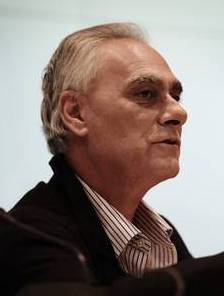By Abdel Monem Said Aly
The story of the “Arab spring” is still unfolding. Complex trends and dynamics can be observed in a variety of countries that are going through different stages of rapid change.
Some revolutions in the region have already toppled regimes, as in Egypt and Tunisia, which are undergoing a painful process of redefining the state in new directions. There, tensions are growing among diverse political forces that see different futures for the country.
Revolutions in other Arab countries — Yemen, Syria and Libya — are still in the process of struggle and bloody confrontation with a regime; or are still budding, as in Algeria, Morocco and Bahrain; or have yet to commence — in Oman, Kuwait, the UAE and Saudi Arabia. Uncertainty remains high in all these countries. The only conclusion that can be drawn is that the Arab state system will never be the same again.
What we know about the Arab region requires serious revision. In short, the conventional wisdom of the “Arab exception” must be scrapped. In the West, the Arabs were considered a very peculiar people because they were untouched by waves of globalization, democratization, and the sense of longing for freedom that other “normal” people in the universe were feeling. Among Arab rulers and a good part of the elite, the Arabs were a “singular” people with a culture that should not be messed with by corrupt western ideas or tainted by allowing others to chart their history. Now, the Arabs are back in full force to join everyone else in the world in an endeavor that never was considered to be easy or linear. The story so far has been colorful: sometimes romantic, at other times bloody and ominous, with martyrs falling and the course of history uncertain.
A third feature is common to many revolutions and regional “springs” wherein revolutionaries face the realities of power and the management of resources. Change, said Leo Strauss, is the essence of politics. The question is whether the change takes us forward or backward.
Here, the Arab revolutions are not much different in content: the new political regimes will continue to face many of the same challenges that confronted the outgoing regimes. Worse, the challenge of democracy places demands on the system that far exceed its own human and physical resources.
Early challenges have involved harmonizing national law and order with a revolutionary sense of freedom that could, in the hands of populists and demagogues, approach chaos. Harmonizing state and religion in a civic state remains a daunting task — from writing constitutions to implementing them — when tensions grow between the realm of legislation and the reign of fatwa.
Other major questions, such as the role of the state in the economy, the relationship between state and society, and morality and freedom, all have to be revisited in the new light of the slogan of the Egyptian revolution: Freedom, Dignity, and Justice. That new addition to the lexicon of revolutions, Dignity, will require conceptualization and operationalization. Development, the concept that is almost absent from the revolutionary dictionary of the Arab spring, will haunt the new regimes like a sandstorm as they come to grips with issues of rich and poor.
A fourth feature is replete with apprehension and uncertainty. The role of elites is crucial as countries confront decision-junctures where options are elusive and emotions high.
Whatever the direction taken, the politics of Arab states will be much more complicated than before. Not only will the actors increase in number and orientation and the media be even more far-flung than its current wild character. We shall also see changes in the definition of major issues like war, peace, development, intra-Arab relations, relations with neighboring countries like Turkey and Iran, and above all Arab-Israel interactions. Relationships with the rest of the world are bound to be different from those prevailing now, particularly with the West and especially with the United States.
In Egypt alone, almost six months after the January 25 uprising, the stage now features 168 political coalitions (each coalition being a combination of other coalitions, groups, and movements); nine new parties in addition to 25 existing ones; 14 new satellite TV stations in addition to 58 existing ones, 31 of which are private; three new daily newspapers in addition to 21 existing ones, plus about 500 other publications; and 25 squares ready for demonstrations by a million or more participants.
In many ways, the Arab world is entering an era of historic change on the scale of Eastern Europe in the post-Cold War era. In contrast, this will be a long process: it might take the rest of the decade to produce a new regional order that is drastically different from the present.
Abdel Monem Said Aly is a Cairo-based writer and political analyst. This commentary is published by DAILY NEWS EGYPT in collaboration with bitterlemons-international.org
